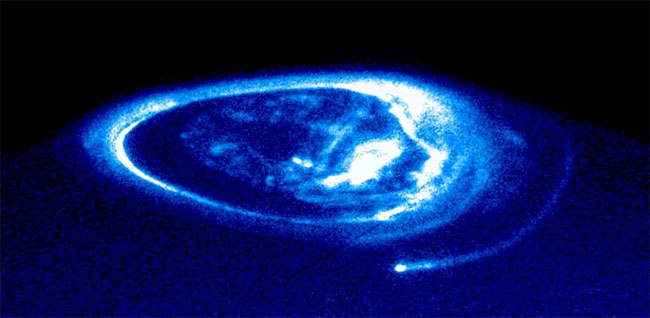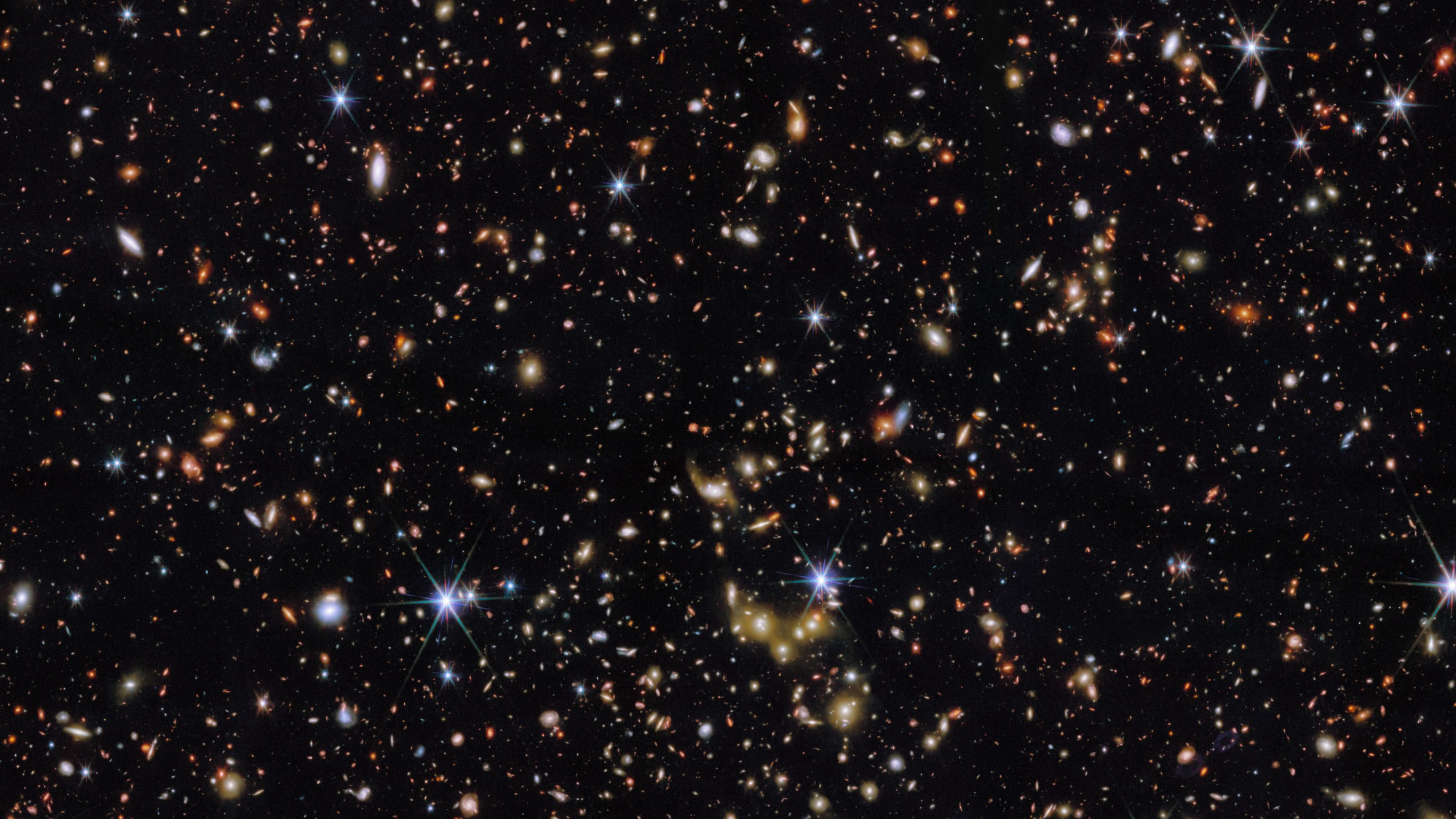
New studies of auroras on Jupiter and Saturn are changing how scientists think the biggest light shows in the solar system are formed. Like auroras on Earth, the Sun plays an important role.
Auroras are eerie, undulating bands and sheets of light that, on Earth, are formed from interactions between charged particles streaming out from the Sun, called the solar wind, and atoms and molecules in the upper layers of the planet's atmosphere where the magnetosphere is weak.
In the Northern Hemisphere, these light displays are known as aurora borealises or northern lights; in the south, they're called aurora australises.
The magnetosphere is an invisible shield that protects Earth from the solar wind and other types of radiation that could otherwise fry satellites and sensitive electronics. The shield is made up of magnetic field lines that radiate out from the poles and is shaped like a donut, with Earth in the middle.
Auroras on Jupiter are up to a hundred times brighter than those on Earth, but until now, scientists had thought the solar wind had very little to do with these Jovian light shows. Instead, it was believed that they were created from material spewed by Jupiter's volcanic moon Io being churned about by the planet's rapidly spinning magnetosphere.
Another way to make auroras
Io is the most volcanically active body in the solar system. The moon expels a stream of sulfur and sulfur dioxide into space at the rate of about one ton per second, forming a large gas cloud that trails behind the moon as it orbits Jupiter.
Get the Space.com Newsletter
Breaking space news, the latest updates on rocket launches, skywatching events and more!
The inner portions of Jupiter's rotating magnetosphere contain a hot gas-like mixture of charged particles and electrons called plasma. When Io's ejected material interacts with this plasma, it gets ionized and becomes plasma itself.
"As soon as the material gets turned into plasma, it suddenly feels Jupiter's magnetic field which is spinning a lot faster," explained Jonathan Nichols at the University of Leicester.
This process is responsible for some of the luminous auroras seen on Jupiter, but not all. Nichols and colleagues recently compared ultraviolet images of Jupiter's auroras taken by NASA's Hubble Space Telescope with simultaneous measurements collected by Cassini of the solar wind during the spacecraft's flyby of the giant planet in December 2000 and January 2001.
They found a strong correlation between the strength of the solar wind and the behavior of auroras at Jupiter's poles. This suggests that Earth-like processes are responsible for some of the planet's auroras, Nichols said.
Nichols will present the team's findings at the Royal Astronomical Society's National Astronomy Meeting on April 4.
At the same meeting, Sarah Badman, also from the University of Leicester, will present results showing that the solar wind also plays a role in the light shows on Saturn. Using a similar combination of Hubble and Cassini information as Nichols' team, Badman found that Saturnian auroras are caused by the explosive release of solar wind energy collected over time and stored in the planet's magnetic field.
Solving an old mystery
The new results from Nichols' team could help explain why Jupiter is significantly warmer than it should be, a mystery that has puzzled scientists for decades.
"We know that the Earth is the temperature it is because of its distance from the Sun, and Mars is colder and Jupiter should be even colder," Nichols told SPACE.com. "But Jupiter is a bit warmer than predicted. It gives out more energy than it receives in terms of solar radiation."
Nichols thinks the energy imparted to the planet by the solar wind is partly responsible for this imbalance.
"That's an energy source which hasn't been taken into account by people when they're trying to calculate what Jupiter's temperature should be," he said.
The findings help explain one mystery, but they also raise another one. Jupiter's auroras appear as concentric ovals near the planet's poles. The researchers found that Jupiter's outer oval auroras--which shouldn't be affected by the solar wind--got brighter the stronger the solar wind blew, which is completely opposite from what is predicted by theory.
"The main aurora oval on Jupiter we think should dim when the solar wind blows harder, but what we see is that actually gets brighter, which is totally counter intuitive and we still don't know why," Nichols said.
- What Is the Aurora?
- Auroral Lights Discovered at Mars
- Northern Lights Continue to Impress Lucky Viewers
- First Artificial Neon Sky Show Created
Join our Space Forums to keep talking space on the latest missions, night sky and more! And if you have a news tip, correction or comment, let us know at: community@space.com.
Ker Than is a science writer and children's book author who joined Space.com as a Staff Writer from 2005 to 2007. Ker covered astronomy and human spaceflight while at Space.com, including space shuttle launches, and has authored three science books for kids about earthquakes, stars and black holes. Ker's work has also appeared in National Geographic, Nature News, New Scientist and Sky & Telescope, among others. He earned a bachelor's degree in biology from UC Irvine and a master's degree in science journalism from New York University. Ker is currently the Director of Science Communications at Stanford University.









